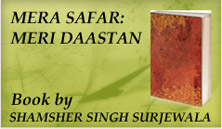- About Kaithal
- Electricity
- Drinking Water & Sanitation
- Education
- Health
- Transport
- Buildings, Roads & Bridges
- Irrigation & Flood Control
- Sports
- Holy Tiraths
- Nau Grah Kunds, Kaithal
- Gyrah Rudri Shiva Temple,Kaithal
- Bidkiyar(vidhkyar) Tirath,Kaithal
- Luv Kush Tirath, Mundri, Kaithal
- Gau Bhawan Tirath, Guhna, Kaithal
- Surya Kund, Sajuma, Kaithal
- Shringi Rishi/Shankhni Devi Tirath, Sanghan, Kaithal
- Vedwati Tirath, Balwanti, Kaithal
- Namish Tirath, Nouch, Kaithal
- Rin Mochan Tirath, Siwan, Kaithal
- Dera Baba Rajpuri/Baba Totapuri,Baba Ladana
- Major(Dargah) of Baba Shah Kamal
- Gurudwara Neem Sahib and Gurudwara Manji Sahib
- Majar of Razia Sultan
- Kapil Muni Sarovar, Kalayat, Kaithal
- Urban Development
- Rural Development
- NIILM University
- Driver’s Training Institute
- Vikas Patrika
Home » Kaithal Constituency » About Kaithal
Kaithal, also known as Kapisthal, is part of 48 Yojan (Kos) Bhoomi (Land) of Kurukshetra. Situated on the banks of Holy River Sarswati, Kaithal, also known as Dev Bhoomi, is a centre point of Hindu Mythology and History.
Kaithal - Kapisthal In Puranas
Oldest Indian scriptures, such as Valmiki Ramayana, Mahabharta, Vaman Puraan, Panini’s Astha - Dhyayyi and Brihat Sanhita of Varah Mihir detail the city as Kapisthal. In Mahabharta’s Van Parv, Kaithal is described as an abode of Mahatma Kapisthal. In the 4th Century B.C., Greek Ambassador Megasthenes in the court of King Chandergupta had described Kaithal as Kambisthalo in his famous book Indica. Famous Persian scholar Al-Biruni has described Kaithal as Kavital in his book Kitab-ul-Hind. Prior to construction of G.T. Road by Sher Shah Suri (1540-44), Kaithal was situated on the main route proceeding from Lahore to Delhi, making it a centre of trade and politics.
Religion and Mythology
Hanuman Tila or Mata Anjani Tila is situated in the heart of the city. Legend has it that this Tila is the place where Lord Hanuman was born from Mata Anjani on account of her communion with Lord Surya (Sun God). Also known as Chhoti Kashi, city houses 108 temples of Lord Shiva, most famous being Gyrah Rudri Mandir.
During the epic war of Mahabharta, Lord Krishna covered 48 Yojan Bhoomi in 18 days and Kurukshetra, Kaithal and portions of the present day District of Jind are part of this Holy land. In this 48 Yojan Bhoomi, 134 Holy Pilgrims (tiraths) have been identified, out of which, as many as 50 tiraths are situated in the present day District of Kaithal.
Other Significant Pilgrim Places :
During Mahabharta, when the famous worrier Babravanan decided to side with Kauravas, he was killed by Lord Krishna. As per his last desire to see the epic battle of Mahabharta, his head was hung on top of a huge tree by Lord Krishna. This tree was said to be at the centre of the Battle of Mahabharta and is situated in the present day Village Sherda in Kaithal.
Phalgu Tirath of Village Pharal in Kaithal is another legendry place that finds mention in Mahabharta and Puraanas as the famous Phalkivan. Mishraque Tirath is also here. This tirath was known as Mishraque as Saint Vyas collected all the tiraths at this place. Legend has it that just a remembrance of Tirath leads to salvation of one’s ancestors forever.
Pundric Tirath of Pundri and Kul Pun/Kulontaran Tirath of Kaul are of equal historical and religious significance.
Revolt Against The Mughals
In 1529, Mandar Rajputs of Kaithal, led by their leader Mohan Singh @ Mohna revolted against the Mughals. This revolt was widely supported by people at large leading to complete demolition of the Mughal structures and rule in the region.
Details of this revolt are available in the book Tareek-a-Shahi of Ahmad Yadgar. King Babar sent his General Ali Kuli Hamdani to curb the revolt who was defeated. In the second and more rigorous attack by the forces of Babar, Mohan Singh and his forces were defeated and thousands lost their lives.
Rule Of Banda Singh Bahadur
Legendry Banda Singh Bahadur was proceeding to Sirhind as per the orders of Guru Gobind Singh Ji. On his way, he had set up his camp in Village Bhuna when he got information that the royal treasure was being transported to Delhi.
Banda Singh Bahadur attacked and took possession of the entire royal treasure as he was attacked by the then representative of the Mughal Rulers. Banda Singh Bahadur killed the Mughal representative and defeated his forces to capture Kaithal. He continued to hold reins of Kaithal for a considerable time.
Rule By Sikhs And East India Company
During the rule of Mughal King, Mohammad Shah (1719-48), Kaithal was awarded as a Jagir to the Biloch General Kamruddin Khan. They continued to rule over Kaithal upto 1755. From 1756 to 1767, Afghans ruled over Kaithal.
Kaithal was ruled over by Bhai Desu Singh from 1767 to 1781, by Bhai Lal Singh from 1781 to1814, by Bhai Partap Singh from 1814 to 1823 and by Bhai Udai Singh from 1823 to 1843. What is significant is that Bhai Lal Singh accepted the dominance of East India Company in 1803 to sustain his rule.
On death of Bhai Udai Singh in 1843, East India Company issued an order on 23rd March, 1843 to take over the reigns of Kaithal. As this order was not accepted by Bhai Udai Singh’s mother, Rani Sahib Kaur and his wife, Rani Suraj Kaur as also by people of Kaithal, Kaithal was attacked on 10th April, 1843 by the British forces.
A rigorous battle ensued on 11th April,1843 where British forces were defeated. British forces then took help from the then rulers of Patiala, Jind and Nabha and a joint attack was launched at Kaithal. On 16th April, 1843, British forces took over Kaithal after a bitter battle and loss of many lives.
Kaithal And First Battle For Freedom From British Rule In 1857
During the battle for freedom in 1857, people of Kaithal and adjoining villages of Keorak, Siwan, Pai, Rajaund, Fatehpur, Pundri, Kaul etc. organized themselves and refused to pay revenue to the British rulers. In the quest for freedom, orders of British rulers were flouted with impunity and British administration ceased to exist. British representatives were camping at Mundri Rest House in Kaithal to curb the large scale massacres. A young freedom fighter, Girdhari Lal Ahluwalia of Village Fatehpur assassinated the British representative. British forces surrounded the village. In order to ensure that there was no mass murders by British forces, Girdhari Lal Ahluwalia voluntarily surrendered to symbolize his quest and contribution to the freedom movement.
He was assassinated by British forces on the day of Raksha Bandhan.British representative, Capt. Hugh sought additional military help. It was only with extensive British military assistance and aided by the forces of Ruler of Patiala, Raja Narinder Singh and Ruler of Karnal, Raja Mohd. Ali Khan that British restored their rule over Kaithal after killing hundreds and torturing even more.
Indian National Congress, Freedom Movement And Kaithal
During Freedom struggle, people of Kaithal contributed extensively. Sarv Shri Kaka Ram, Mahashya Brij Lal, Narata Ram Bhalla, Hans Raj, Maulna Fateh Mohammad, Ram Kishan, Sangat Singh Kutabpur, Chandan Lal, Baldev, Miyan Mohd. Yusuf, Devi Dayal Thathera, Lala Phaggu Ram, Raghubir Munshi and many others were active leaders and workers of Indian National Congress.
Entire Kaithal was shut down against the brutal massacre of Jalianwala Bagh on the Baishakhi Day on 13th April, 1919. As a protest against British atrocities, Kaithal Railway Station was burnt down.
People of Kaithal contributed enthusiastically to the Non-Cooperation Movement of Mahatma Gandhi. After December 1929 Sampuran Azadi Resolution of Indian National Congress in the Lahore Convention, 26th January, 1930 was celebrated as the First Freedom Day in Kaithal. On this occasion, Mahashya Hans Raj was sentenced to three months imprisonment. During Savinay Avigya Andolan of 1932, led by Lala Kaka Ram, people of Kaithal boycotted foreign goods and picketed shops selling foreign articles and goods. Agitationists were lathi charged and fired upon by the police.
During 1938-39 Hyderabad Satyagrah, a delegation led by Vaid Chandu Lal, Lala Hans Raj, Devat Ram, Raghubir Munshi, Daryao Singh Jat, Shri Ram Verma, Narata Ram Dhiman, Pyare Lal, Panna Lal Malikpura etc. reached Gulbarga in Karnataka. They were detained and sentenced to two years imprisonment. Thereafter, three more delegations led by Mahashya Brij Lal and others went to participate in the Hyderabad Satyagrah.
In August 1942 during Bharat Chhodo Andolan, Congressmen led by Lala Kaka Ram jumped into fray. Many were detained and could only be released in the mid of 1944-45.
Kaithal As An Administrative Unit
During 1266-86, Delhi’s ruler Sultan Balban had given the status of Commissionerate to Kaithal and had appointed his General Jalaludin Khilji as its Commissioner. On death of Sultan Balban in 1286, Jalaludin Khilji killed his grand son and took over reigns of Delhi Saltanat in 1290.
From 1843 to 1849, during British rule, Kaithal remained a district. In 1849, Kaithal was placed under District Thanesar. In 1862, it was placed under District Karnal.
After Independence of India on 15th August, 1947 upto 1973, Kaithal remained a Tehsil of District Karnal. In 1973, Kaithal was made a Tehsil of District Kurukshetra. In 1989, Kaithal was again made a district.
What is ALSO worth noting is that rail service was started between Narwana and Kaithal during British rule in 1899 for the first time. During 1911, Kaithal was connected to Kurukshetra by train.
Municipal Council, Kaithal was constituted in 1867 for the first time. At that time, population of Kaithal was 14,940.
Present Day Kaithal
Kaithal was carved out as a separate District of Haryana on 4th November, 1989. District Kaithal has a total of 276 villages with total land area being 2,27,330 hectares. It has two Sub Divisions i.e. Kaithal and Guhla, three Tehsils i.e. Kaithal, Guhla and Pundri and four Sub Tehsils i.e. Siwan, Kalayat, Rajound and Dhand. It has six Blocks i.e. Kaithal, Cheeka, Rajound, Pundri, Kalayat and Siwan.
Kaithal has four Assembly Constituencies. These are (i) 15-Guhla-Cheeka Assembly Constituency, (ii) 16-Kalayat Assembly Constituency, (iii) 17-Kaithal Assembly Constituency and (iv) 18-Pundri Assembly Constituency.
Kaithal Assembly Constituency, which is also a District Headquarter, is presently represented by Randeep Singh Surjewala, who was elected as an M.L.A. on 22nd October, 2009. Between February, 2005 – October, 2009; it was represented by Ch. Shamsher Singh Surjewala (Father of Randeep Singh Surjewala) as its M.L.A.
Kaithal’s growth story has been made possible on account of tireless efforts of Ch. Shamsher Singh Surjewala and Randeep Singh Surjewala. UPA Chairperson - Smt. Sonia Gandhi’s blessings and unquestioned support of Haryana Chief Minister – Shri Bhupinder Singh Hooda have made this dream into a reality.
Kaithal Constituency
© Copyright 2011 Block Congress Committee, Kaithal Randeep Singh Surjewala, All Rights Reserved.


